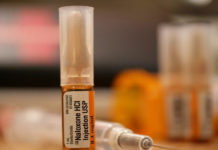Heavy drinking is known to alter behaviors and neurological systems, but a new research revealed that the neurotoxic effects of heavy alcohol use can be even more damaging for teens and young adults.
Published in the peer-reviewed journal Frontiers in Psychology, the research was led by Anita Cservenka, a professor at Oregon State University, who reviewed a number of existing studies about adolescence and the dangerous effects of binge or heavy drinking — defined as at least four alcoholic beverages in two hours for women and five for men.
“There is increasing evidence for common patterns of brain activity in binge and heavy drinking adolescents and young adults across several studies,” she said. “Most of the research on inhibitory and cognitive control indicate that binge and heavy drinking youth have greater brain activity in several executive functioning brain regions relative to healthy controls.”
Cservenka addressed the dangers of binge drinking on the brains of young individuals by focusing on six different elements: working memory, learning and memory, alcohol cue reactivity, decision making and reward processing, socio-cognitive and socio-emotional processing, and response inhibition.
Most of the studies included subjects who were in their late teens or early 20s and drank heavily but did not meet the criteria for alcohol use disorder.
“The studies selected for this review article were magnetic resonance imaging studies that specifically included adolescents or young adult binge and heavy drinkers,” she said. “We excluded studies that were focused on youth with alcohol use disorder as we were interested in how patterns of alcohol use (such as binge drinking) in youth are related to brain structure and function in individuals who do not meet criteria for a psychiatric disorder.”
After the extensive analysis, Cservenka concluded that binge drinking may reduce certain areas of the brain that are important for memory and language functions as well as awareness and attention.
“Binge and heavy alcohol use are related to cortical thinning in the brain and altered brain activity even in youth who do not have an alcohol use disorder,” she said. “It is important to understand that common patterns of heavy alcohol use during adolescence are related to atypical brain structure and function during a time when neurodevelopment is still underway.”
These neurological and cerebral alterations caused… (continue reading)

















